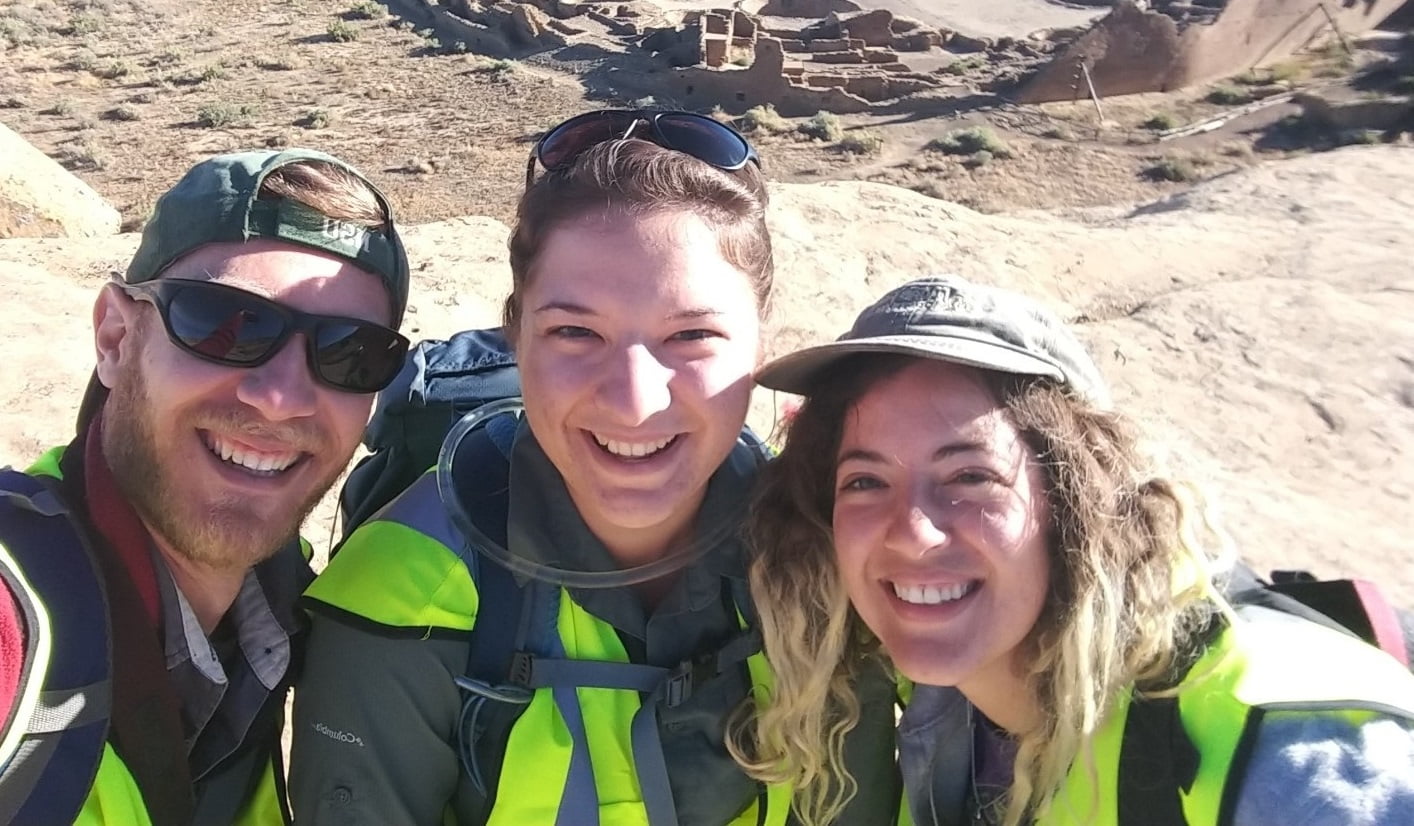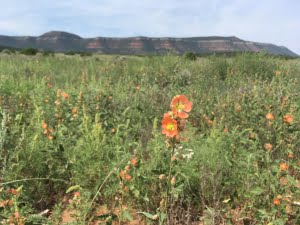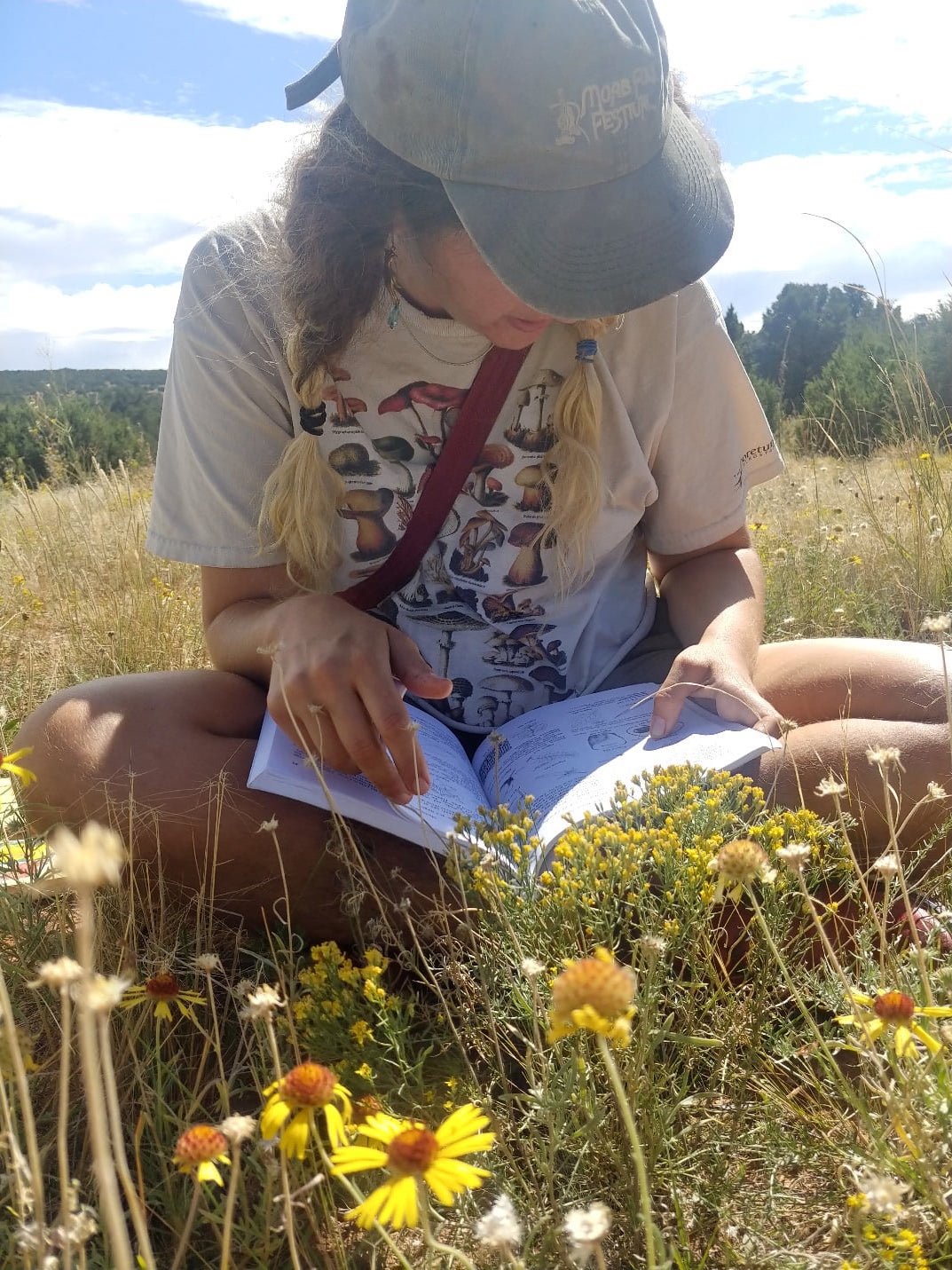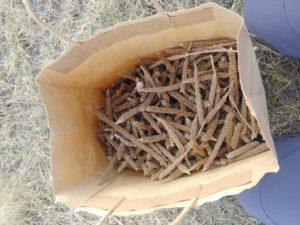
Much more than a Handful of Seed – Highlights from a Season with the National Park Service Crew in the Desert Southwest
By Melanie Gisler, Lindsay Jaeger, and Meredith Prentice
December 2019
IAE has been collecting seeds from native plants since we opened our doors in 1999. Our first seed collections were from rare plants for use in recovery efforts. In 2005, we initiated a seed crew dedicated to collecting species to increase for use in restoration, and since then we have hosted seed crews nearly every year. In 2019, IAE Southwest Office had four different seed crews whose collection activities ranged far and wide – from the Chihuahuan Desert and Southern Rockies of New Mexico and Arizona to the Willamette Valley of Oregon. This blog highlights the adventures of our 2019 Southwest National Park Service Crew, based in Santa Fe, New Mexico.
Collecting native seed is rarely just about putting seeds from a plant into a bag. Each plant, site, and collector has its story, and that seed that just went into the bag – well, its story is just beginning.
This story begins with funding awarded to IAE Southwest by the National Park Service (NPS) in 2019 that enabled us to hire three young native plant conservationists, excited to explore new parks and enhance their plant identification skills. On the first day of work in August, our NPS team (Meredith Prentice, Theresa Galhouse, and TJ Hathcock) hit the road on a 5.5 hour drive to join our Department of Transportation and Forest Service crews for a week-long training in Silver City, New Mexico, in local botany and seed collection protocols. We use the Bureau of Land Management Seeds of Success (SOS) Technical Protocol. This standardized protocol is ideal because it ensures that collections are accurately identified and thoroughly documented, genetically diverse, and harvested in a way that does not harm wild populations.
Upon returning to Santa Fe, the NPS crew worked with National Park Service staff to develop a collection strategy based on each park’s restoration needs. The funny thing about seed collecting is that you never know what you are going to get. Will it be a drought this year? Will it freeze early? Will the population you were counting on be grazed before you can get there? Seed collectors need to have faith that they will be lucky enough to find the plants they seek and that they will return at the optimal time to collect mature seed. If you return too early, the seed will be green, but if you return too late, the seed may have already dropped. Seed collectors also need a lot of patience when it doesn’t work out how they expected. So our Park Service team, armed with a dose of faith along with a list of amazing parks to visit and species to collect, tablets for documenting scouting and collection locations, paper bags, plant press, camping gear, first-aid supplies, and a thick copy of Flora Neomexicana, was set.
Their first step was to find the plants. Scouting for target species is like an Easter egg hunt, and it feels like you found the golden egg when you finally locate a healthy population of a priority species. They collected seed by hand, typically using the technique of stripping ripe seed from plant stems. And by the end of the season despite this drought year, the NPS crew completed 32 native seed collections at seven different National Parks. In addition, they located and mapped many more species and populations for future collections. The crew helped clean the seed they collected, and this seed will soon find a new home in a greenhouse or farm field or returned to the Parks for use in restoration projects.
The NPS team enjoyed the wonders offered by each National Park during their seed collection hitches - the brilliant starry night sky of Chaco Canyon, the enchanting Ancestral Puebloan sites at Bandelier, Aztec, and Chaco Canyon, remnant Spanish missions of Salinas Pueblo, and the dramatic cinder cone from an extinct volcano at Capulin National Monument. IAE promotes cross-training among staff, so one fine day in October, they were joined by our Agricultural Liaison Roberto Flores on collections of sideoats and hairy grama (Bouteloua curtipendula and B. hirsuta) at Pecos National Historical Park. Here is what Roberto had to say about his experience…
“After an early start heading to the Park office to pick up a radio, wading boots and some basic protocol reminders, our crew crossed the beautiful, half-frozen Pecos River. Following the river for a half-hour, we arrived at a large field with healthy populations of both target species and reviewed scouting data of the collection area. From there, we got to work collecting, in a half-meditative state. During this singular process, one makes a connection with the environment that is hard to describe. You get one-on-one with each plant. You take a physical part of it, with the goal of improving its habitat, this area where the population makes its home. You form a relationship that improves your life and expands your understanding – not only of ecology, but of human connectivity with our environment, other people and ourselves."
This morning, like many other collection days of the season, provided a connection that is often missing in modern society – a link between people and nature. Our Park Service crew has now moved on for the season, but the fruits of their labor will be the fruits for future native species conservation in the Southwest.
This work supports the National Park Service mission to preserve and extend the benefits of natural and cultural resources. Native plants are necessary to restore ecosystem services, wildlife habitat, compete with exotic plants, and many are culturally significant and increase the historical value of our National Parks. In addition, it supports the goals of the Southwest Seed Partnership (SWSP) to improve the availability of ecologically appropriate native seed for restoration use in New Mexico and Arizona. We thank the National Park Service for this opportunity.
Restoration
Research
Education
Get Involved
Contact
Main Office:
4950 SW Hout Street
Corvallis, OR 97333-9598
541-753-3099
info@appliedeco.org
Southwest Office:
1202 Parkway Dr. Suite B
Santa Fe, NM 87507
(505) 490-4910
swprogram@appliedeco.org
© 2025 Institute for Applied Ecology | Privacy Policy



